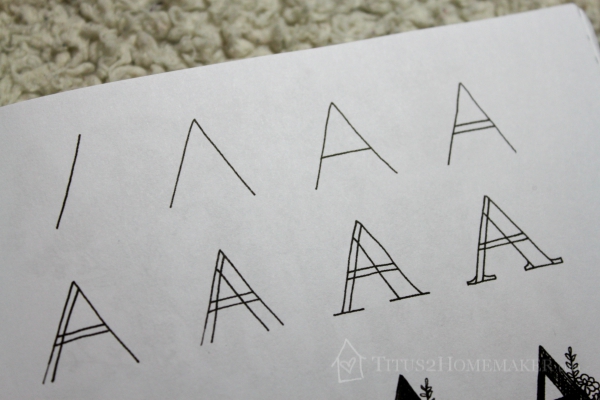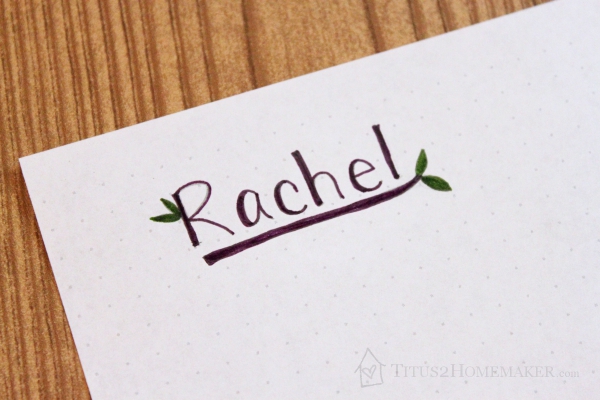I received a copy of this book from the publisher to facilitate my review. As always, all opinions expressed here are entirely my own.

Maybe, like me, you’ve gotten interested in Bible journaling or making your planner a little more fun/interesting, but decorative lettering is still pretty elusive (or tedious). Or maybe you made some beautiful cards from Send Something Beautiful or a similar book and you want some beautiful lettering to go with it. Or maybe you just want to play with lettering for the fun of it. You might find The Botanical Hand-Lettering Workbook useful.
I’ll be honest, “whimsical” is not really my think. “Floral” really isn’t, for the most part, either. I’m more of a “rough and rugged” than a “cutesy” type. But think outside the box a little! The details of this book are floral decorations on letters, cute little terrariums, etc. But the principles of this book are the creation of different styles of lettering, and the embellishment of them. You can learn the latter even if you don’t intend to put them to use in the context of the former.
As you can see from the table of contents, there are a lot of good lettering fundamentals here. Sans serif vs. serif fonts. Script. Block/dimensional lettering. Combining styles. Positive and negative spaces. And only then does the author really get into embellishment. The specific examples offered are plants — flowers, leaves, fruits, vegetables — but the same methods of embellishment can be used even if you’re adding animals or footballs or houses or whatever else floats your boat. Of course the fundamentals of creating the letters in the first place are useful for anyone needing decorative lettering.
This example from near the beginning shows the building up of a letter from the very first line:
This kind of thing is very helpful for me to see how artists break things down. Sometimes I get this idea in my head that they just start with the end product — that there’s never any “building process” involved — and then I feel like I could never do that. But I can draw a line…and another line…and another line.
Here’s just a super-quick little thing I threw together after seeing some inspiration from the book:
It’s not going to win any awards, but it’s a start.
(This is on a scrap piece of paper, but there’s lots of room to practice in the book.)



Leave a Reply